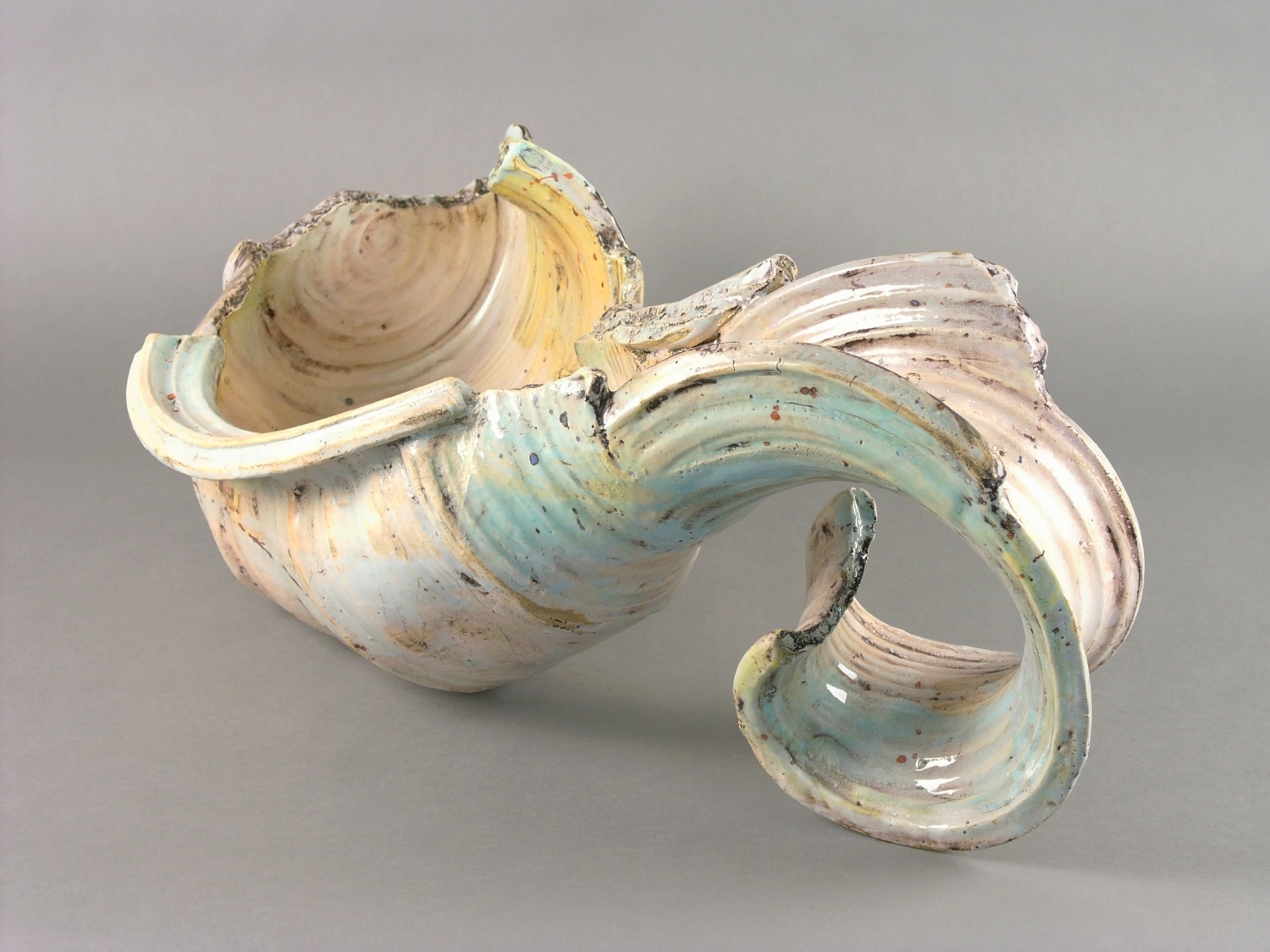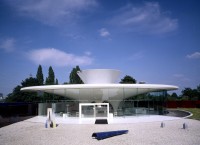Fulle, Karl, 1998
Einer weniger rotierenden Bewegungsform widmet sich Karl Fulle etwa seit dem Jahr 2000 mit Arbeiten zum Thema Wellen, Wogen oder Maritimes (Kat. 25-32). Eine Vorform bildet die noch aus Drehteilen zusammengesetzte Arbeit Lamandar von 1998 (Kat. 24), die mit dem einen geschwungenen Ende schon auf die kommende Entwicklung hinweist, während das andere Ende noch deutlich das volumenbildende Gefäß thematisiert. Die
maritimen Formen sind in ihrer Vollendung aus einem aufgerissenen Drehteil geformt und durch Bewegung und Gegenbewegung kraftvoll bestimmt. Ihre großzügige Lebendigkeit
findet meist in pastellfarbenen Glasuren eine dezente Ergänzung.
Text von Gudrun Schmidt-Esters aus dem Katalog "Karl Fulle", 2013, KERAMION
en

